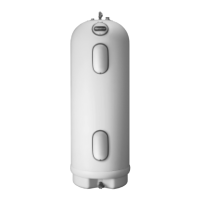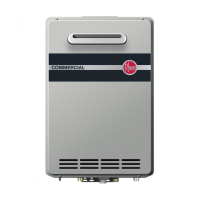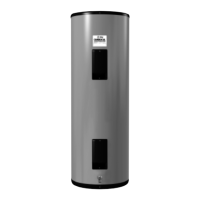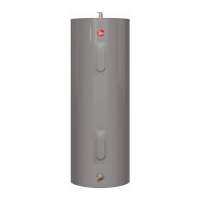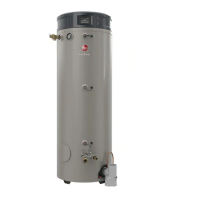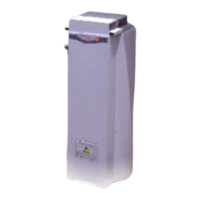40
Venting
INSTALLATION INSTRUCTIONS
Venting for Direct-Vent Water Heater (cont.)
Exhaust Vent Pipe
Air Intake Pipe
Wall Plate
(recommended)
Inspection
Access Panel
(Optional)
Inspection
Access Panel
(Optional)
Ceiling
Downward Slope
to Outside termination
12"
(300 mm)
Approximately
4” recommended
Horizontal Vent Installation
WARNING: Danger of fire or bodily injury
– Solvent cements and primers are highly flammable.
Provide adequate ventilation and do not assemble near
heat source or open flame. Do not smoke. Avoid skin
or eye contact. Observe all cautions and warnings on
material containers.
CAUTION: Use tankless water heater
manufacturer-approved Schedule 40 PVC (foam core
is not permitted at any time), Schedule 80 PVC, CPVC,
ABS or UL 1738-listed Category III Stainless Steel.
No other vent material is permitted. For Canada,
installations must follow ULC S636 for exhaust venting.
Joining Pipes and Fittings
All pipe, fittings, solvent cement, primers, and
procedures, for the U.S., must conform to American
National Standards Institute and American Society
for Testing and Materials (ANSI/ASTM) standards. For
Canada, all pipe, fittings, solvent cement, primers,
and procedures must conform to ULC-S636 and vent
manufacturer specifications.
CAUTIONS:
• D o NOT use solvent cement that has become curdled,
lumpy, or thickened.
• D o NOT thin solvent cement. Observe shelf
precautions printed on the containers.
• For applications below 32°F, use only lower
temperature-type solvent cement.
• Appropriate solvent and cleaner must be used for the
type of vent pipe used (PVC, CPVC, or ABS).
Cleaner-Primer and Medium-Body Solvent
Cement
All joints in vent piping must be properly sealed, and
we recommend using the following material:
PVC materials should use ASTM D-2564-grade cement.
CPVC materials should use ASTM F-493-grade cement.
ABS materials should use ASTM D-2235-grade cement
(ABS is not allowed for exhaust vent in Canada).
Cementing Joints
1. Cut pipe end square; remove jagged edges and
burrs. Chamfer end of pipe; then clean fitting
socket and pipe joint area of all dirt, grease, or
moisture.
2. After checking pipe and socket for proper fit, wipe
socket and pipe with cleaner-primer. Apply a liberal
coat of primer to inside surface of socket and
outside of pipe.
3. Apply a thin coat of cement evenly in the socket.
Quickly apply a heavy coat of cement to the pipe
and insert pipe into fitting with a slight twisting
motion until it bottoms out.
4. Hold the pipe fitting for 30 seconds to prevent the
tapered socket from pushing the pipe out of the
fitting.
5. Wipe all excess cement from the joint with a rag.
Allow 15 minutes before handling. Cure time will
vary according to fit, temperature, and humidity.
NOTICES:
• Cement must be fluid; if not, recoat with fresh
cement.
• Stir the solvent frequently while using. Use a natural
bristle brush or the dauber supplied with the can.
The proper brush size is one inch.
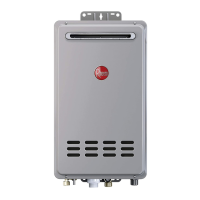
